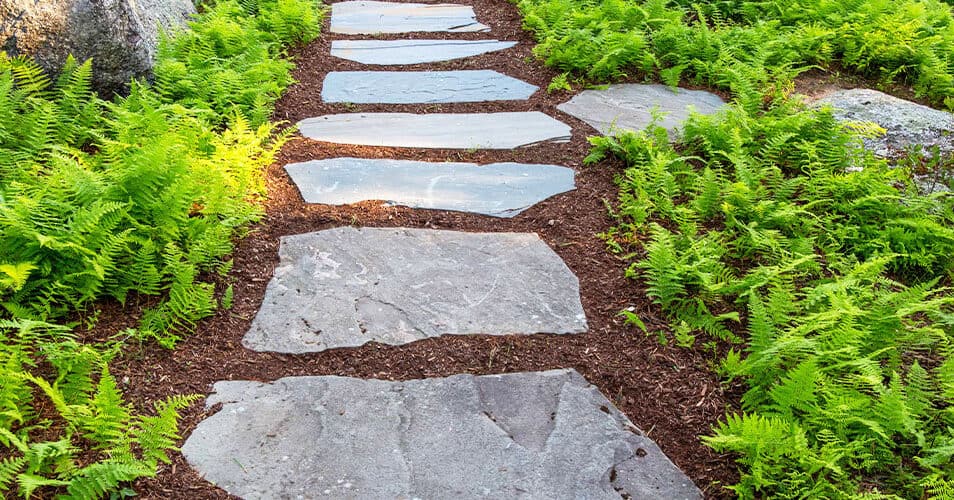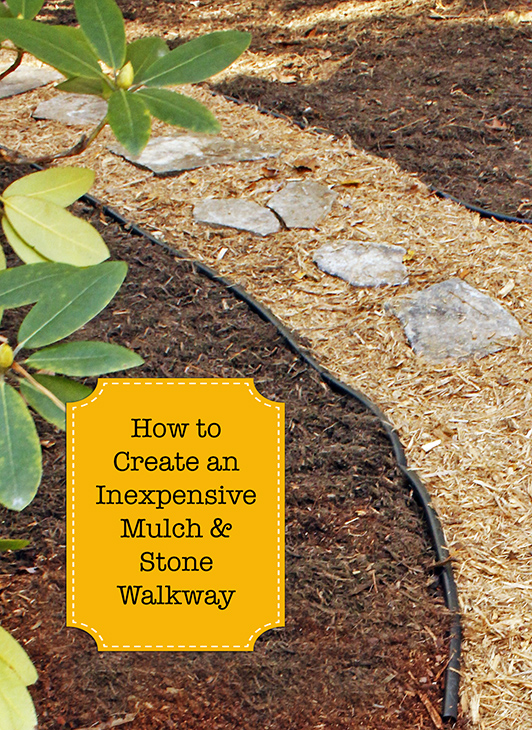How To Create A Mulch Pathway That Will Last A Lifetime
Introduction
A mulch pathway is a great way to add beauty and functionality to your garden. Mulch helps to suppress weeds, retain moisture, and improve the overall health of your plants. It can also be a very attractive addition to your landscape, especially when you choose the right type of mulch.
In this blog post, we will show you how to create a mulch pathway that will last a lifetime. We will provide step-by-step instructions, as well as tips on choosing the right type of mulch and maintaining your pathway.
Benefits of Mulch Pathways
There are many benefits to creating a mulch pathway in your garden. Here are a few of the most important ones:
- Suppresses weeds: Mulch helps to suppress weeds by blocking out sunlight. This can save you a lot of time and effort in the long run.
- Retains moisture: Mulch helps to retain moisture in the soil, which is especially important in hot, dry climates. This can help your plants to thrive, even during periods of drought.
- Improves soil health: Mulch can help to improve the overall health of your soil by adding organic matter. This can make your soil more fertile and better able to support plant growth.
- Attracts beneficial insects: Mulch can attract beneficial insects, such as earthworms and ladybugs. These insects help to control pests and improve the overall health of your garden.
- Looks great: Mulch can add beauty and interest to your garden. There are many different types of mulch available, so you can choose one that matches the style of your garden.
Choosing the Right Type of Mulch
There are many different types of mulch available, so it is important to choose one that is right for your needs. Here are a few factors to consider when choosing a type of mulch:
- Color: Mulch comes in a variety of colors, so you can choose one that complements the plants in your garden.
- Texture: Mulch also comes in a variety of textures, so you can choose one that feels good underfoot.
- Durability: Mulch should be durable enough to withstand foot traffic and weather conditions.
- Cost: Mulch can vary in price, so you will need to choose one that fits your budget.
Some of the most popular types of mulch for pathways include:
- Wood chips: Wood chips are a good choice for pathways because they are durable and attractive. They come in a variety of colors, so you can choose one that matches your garden.
- Pine needles: Pine needles are another good choice for pathways. They are soft and pleasant to walk on, and they help to suppress weeds.
- Bark mulch: Bark mulch is a more expensive option, but it is also very durable and attractive. It comes in a variety of colors, so you can choose one that matches your garden.
- Gravel: Gravel is a good choice for pathways in areas with heavy foot traffic. It is also very durable and can withstand the elements.
Creating Your Mulch Pathway
Once you have chosen the type of mulch you want to use, you can start creating your pathway. Here are the basic steps involved:
- Remove any weeds or debris from the area where you want to create your pathway.
- Mark out the outline of your pathway with stakes and string.
- Dig a shallow trench along the outline of your pathway.
- Add a layer of mulch to the trench.
- Spread the mulch out evenly.
- Water the mulch well.
Maintaining Your Mulch Pathway
Once you have created your mulch pathway, you will need to maintain it regularly. Here are a few tips for maintaining your mulch pathway:
- Water the mulch regularly, especially during hot, dry weather.
- Add more mulch as needed to keep the pathway covered.
- Remove any weeds or debris from the pathway.
- Re-mulch the pathway every few years to keep it looking its best.
Conclusion
Creating a mulch pathway is a great way to add beauty and functionality to your garden. By following the tips in this blog post, you can create a mulch pathway that will last a lifetime.
If you're interested in learning more about mulch pathways, I recommend visiting Home Gardening. This website has a wealth of information on the topic, including how to choose the right type of mulch for your pathway, how to install it, and how to maintain it.
FAQ of mulch pathway
- What is a mulch pathway?
A mulch pathway is a path in your garden that is covered with mulch. Mulch helps to suppress weeds, retain moisture, and improve the appearance of your garden.
- What are the benefits of using mulch on a pathway?
There are many benefits to using mulch on a pathway, including:
* Suppresses weeds: Mulch helps to suppress weeds by blocking sunlight and preventing them from germinating.
* Retains moisture: Mulch helps to retain moisture in the soil, which can help to reduce your watering needs.
* Improves soil structure: As mulch decomposes, it helps to improve the soil structure, which can make it easier for plants to grow.
* Improves the appearance of your garden: Mulch can help to improve the appearance of your garden by creating a finished look.
- What type of mulch should I use for a pathway?
The best type of mulch for a pathway will depend on your climate and the plants in your garden. Some common types of mulch for pathways include:
* Wood chips: Wood chips are a versatile type of mulch that can be used in a variety of climates. They are also relatively inexpensive.
* Bark chips: Bark chips are another versatile type of mulch that is often used in gardens with trees. They can help to suppress weeds and improve the drainage of the soil.
* Pine needles: Pine needles are a good choice for pathways in areas with acidic soil. They help to retain moisture and improve the drainage of the soil.
* Straw: Straw is a good choice for pathways in areas with hot, dry summers. It helps to retain moisture and suppress weeds.
- How thick should I layer the mulch on my pathway?
The thickness of the mulch layer will depend on the type of mulch you are using. In general, you should layer the mulch about 2-3 inches thick.
- How often do I need to reapply mulch to my pathway?
The frequency with which you need to reapply mulch to your pathway will depend on the type of mulch you are using and the climate in your area. In general, you should reapply mulch every 1-2 years.
- What are some tips for maintaining a mulch pathway?
Here are some tips for maintaining a mulch pathway:
* Remove any weeds that grow through the mulch.
* Replenish the mulch layer as needed.
* Avoid walking on the mulch, as this can compact it and make it less effective.
Image of mulch pathway
Pebbled pathway
Pebbled pathways are a classic and elegant option. They can be made with a variety of different types of pebbles, including river rocks, pea gravel, and crushed stone.
Woodchip pathway
Woodchip pathways are a natural and earthy option. They are made from shredded wood, which can be either brown or bark-colored.
Gravel pathway
Gravel pathways are a versatile option that can be used in a variety of settings. They are made from small stones, which can be either smooth or rough.
Cobblestone pathway
 Cobblestone pathways are a rustic and charming option. They are made from large, irregular stones.
Cobblestone pathways are a rustic and charming option. They are made from large, irregular stones.Flagstone pathway
 Flagstone pathways are a classic and elegant option. They are made from thin, flat stones that are often arranged in a geometric pattern.
Flagstone pathways are a classic and elegant option. They are made from thin, flat stones that are often arranged in a geometric pattern.Brick pathway
 Brick pathways are a durable and stylish option. They are made from bricks, which can be either red or brown.
Brick pathways are a durable and stylish option. They are made from bricks, which can be either red or brown.Pavers pathway
 Pavers pathways are a versatile option that can be used in a variety of settings. They are made from small, square stones.
Pavers pathways are a versatile option that can be used in a variety of settings. They are made from small, square stones.Shingle pathway
 Shingle pathways are a natural and earthy option. They are made from small, overlapping shingles.
Shingle pathways are a natural and earthy option. They are made from small, overlapping shingles.Mulch pathway
 Mulch pathways are a simple and easy-to-care-for option. They are made from a variety of different types of mulch, including bark chips, pine needles, and straw.
Mulch pathways are a simple and easy-to-care-for option. They are made from a variety of different types of mulch, including bark chips, pine needles, and straw.Compost pathway
 Compost pathways are a sustainable and environmentally-friendly option. They are made from compost, which is a mixture of organic materials that have been decomposed.
Compost pathways are a sustainable and environmentally-friendly option. They are made from compost, which is a mixture of organic materials that have been decomposed.
Post a Comment for "How To Create A Mulch Pathway That Will Last A Lifetime"